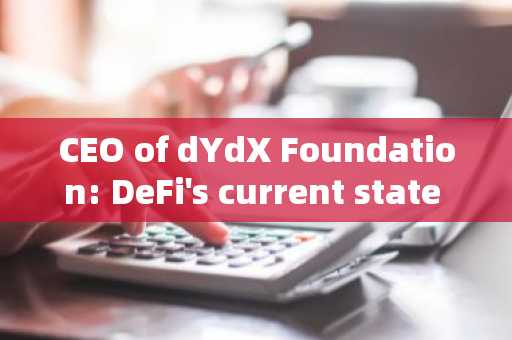CEO of dYdX Foundation: DeFi's current state is like the internet in the 1990s, and it will ush
According to CoinDesk, Charles D'Haussy, CEO of the dYdX Foundation, stated that the current stage of development for decentralized finance (DeFi) is similar to that of the internet in the 1990s, and there is still much to learn from its development experience. In addition, he believes that DeFi and centralized finance (CeFi) play different roles, and there is a demand for both in the market.

DeFi's' walled garden 'moment
During this week's Hong Kong Fintech Week, D'Haussy stated in an interview with CoinDesk that regulatory requirements and increased demand for comprehensive products may drive growth in the niche DeFi field. Despite being in a market slump over the past year, DeFi may usher in its "internet" moment as retail products develop.
D'Haussy predicts that the development of the DeFi market will be similar to the development of the internet in recent years - people primarily interact through applications rather than web browsers. He said:
In my opinion, the Internet is becoming a fragmented network with multiple walled gardens... People are no longer using web browsers, but are turning to applications. The evolution of the network towards isolated systems shows a huge change in the way network products are distributed, and DeFi needs to follow users into these spaces
Can complement CeFi and overcome regulatory challenges
D'Haussy also sees similarities in the regulatory evolution of the internet and DeFi. He explains that in the 1990s, regulators worked hard to understand and control the decentralized nature of the internet, seeking a non-existent "internet CEO" and ultimately shifting their focus to regulating internet access service providers such as AOL and other ISPs.
He believes that although DeFi operates as an open and unpredictable financial ecosystem without central control, regulatory agencies will not target the protocol itself, but will focus on centralized finance (CeFi) platforms and other gateways as regulatory entry points.
The distribution model of DeFi is evolving, and CeFi can fill these gaps by providing a bridge within compliance for users who want decentralized options. When Binance or other exchanges enable non custodial wallets, users can perform operations in DeFi beyond what is allowed by relying solely on CeFi regulation
D'Haussy concluded that once the market clarifies how to integrate CeFi and DeFi, and addresses regulatory and technological challenges, we will usher in the future of finance. Where will this happen? It may be in Hong Kong - one of the most strategic and important hubs for cryptocurrency.
本文内容由互联网用户自发贡献,该文观点仅代表作者本人。本站仅提供信息存储空间服务,不拥有所有权,不承担相关法律责任。